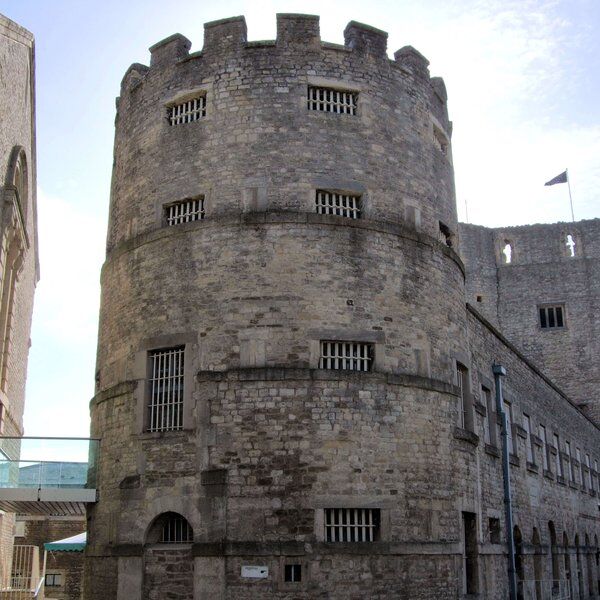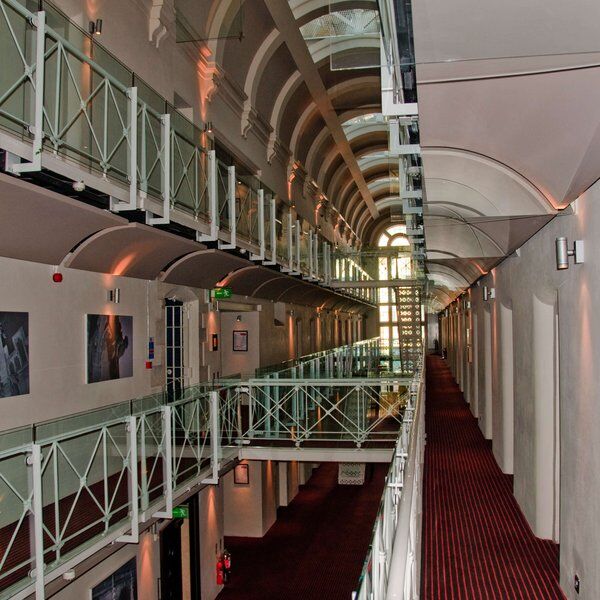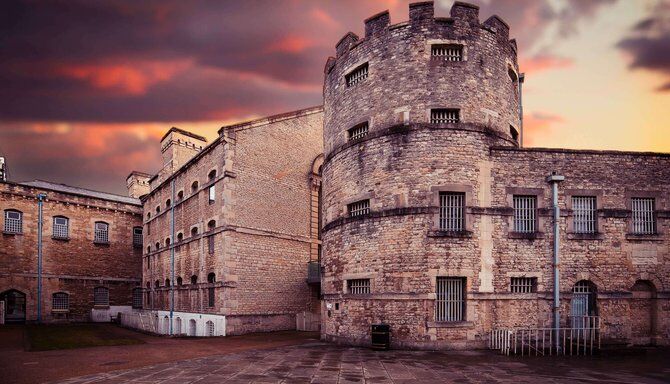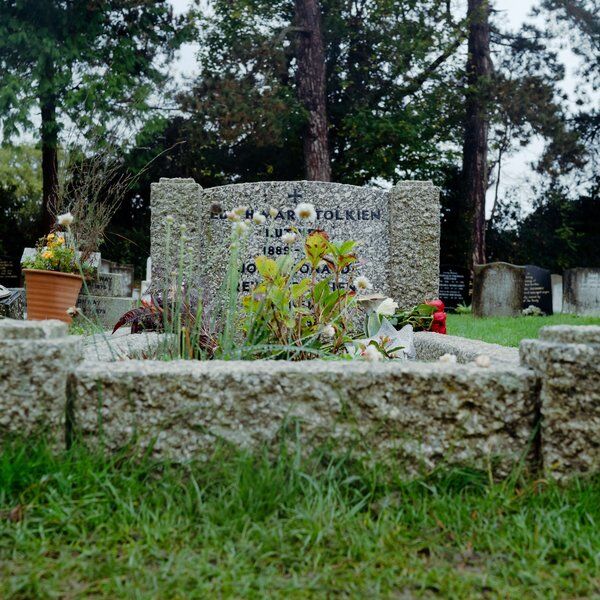After William the Conqueror’s victory at the Battle of Hastings in 1066, England’s larger towns and cities underwent massive transformations. Oxford was no exception.
The newly-arrived Normans wasted no time in showing the English that they were here to stay - and that they were prepared to crush any objectors. To prove their permanence and strength, they built colossal buildings such as the Tower of London, and, in Oxford’s case, Oxford Castle.
Throughout its long life, Oxford Castle has been transformed to accommodate the ever-changing present. From a Norman wealth and status symbol to a place of cruel punishments, Oxford Castle and Prison should be at the top of anyone's list to discover a unique slice of Oxford's history.
History of Oxford Castle
The story of Oxford Castle begins near the beginning of the Norman conquest, around 1070. The Norman baron Robert D’Oilly, a friend and ally of William the Conqueror, commissioned the building of Oxford Castle; it took eight months for 200 Saxon slaves to construct it out of timber. D’Oilly later became one of the mightiest figures in Oxford, owning vast stretches of the city and wider county of Oxfordshire.
However, it soon became clear Oxford Castle in its original motte and bailey state was hardly the infallible and imposing building that D’Oilly had envisioned. In 1073, Oxford Castle was fortified with stone to ensure the building’s longevity and stateliness. The Normans were also not above renovating buildings that had existed before they arrived - they built stone walls which incorporated St George’s Tower to the castle, a Saxon tower that was once used as a watchtower.
Oxford Castle Becomes a Prison
Although there is no exact date for when the castle started holding inmates instead of the D'Oilly family and military personnel, some sources suggest that from 1216 onwards Oxford Castle started being used as a prison.
The earliest ‘inmates’ to experience Oxford Castle as a prison were ‘drunken and disorderly students’ of nearby Oxford University, who were shut away overnight in a dungeon near St George’s Tower.
From the 14th century until 1577, Oxford Castle and Prison became the venue for the local Oxford Assizes. The abrupt end to this was caused by the Plague, which killed the Lord Lieutenant of Oxfordshire, two knights, a descendant of Robert D’Oilley (who bore the same name as his ancestor), 80 gentlemen and all of the ‘grand jury’.
During the English Civil War (1642-1652), Oxford became the capital of the Royalists. Oxford Castle was successfully captured by Parliamentarians in 1646 and much of the original, medieval elements of the castle were destroyed.
The Evolution of Oxford Prison
Following the Restoration of the Monarchy, Oxford Castle was repaired and used primarily as a local prison, but it wasn’t somewhere anyone would willingly have entered.
In alignment with most English prisons, Oxford prison (then referred to as a ‘gaol’) was originally privately-owned.
Oxford gaol was owned by Christ Church College of the University of Oxford, who sublet the castle to wardens who made a profit by charging prisoners for their lodging.

For much of English penal history, gaols were mainly used to temporarily house alleged criminals before they went to trial - during the Elizabethan period, fewer than 1% of cases resulted in long-term imprisonment. Ironically, the crime most likely to land someone in prison for a longer period was being in debt - something that was made worse by having to pay for a long stint in a privately-owned hovel such as Oxford Castle.
This tradition at Oxford prison continued until 1770, when the prison reformer John Howard made a damning, comprehensive report of the conditions in Oxford gaol. Howard pronounced Oxford gaol as unfit for human habitation, and as a result, the Government intervened by taking ownership and redeveloping Oxford castle and prison.

The redevelopment marked a slight change in the attitudes of people towards prisons and inmates. The prison became a kind of charity; in 1789, an edition of the Oxford Journal published an article asking rich, charitable people to support Oxford gaol by paying a “subscription for the Relief and Encouragement of Industrious Prisoners confined in the Castle Goal…of the said County”.
At the beginning of the 19th century, Oxford gaol had been redesigned with new buildings to accommodate the new, ‘modern’ prison: within Oxford Castle, there was a new County Hall, County Gaol and Court, new ‘punishment cells’ and an exercise yard.
Modern Day Oxford Castle and Prison

In 1888, following the National Prison Reforms, the Prison Commissioners took responsibility of Oxford Gaol and renamed the prison HM Prison Oxford. The prison operated until 1996 when it was handed over to the Oxfordshire County Council.
From 1996 until 2006, Oxford Prison was a derelict building until private developers purchased the historic venue and transformed it into a boutique hotel and attraction called the Malmaison Oxford.
Oxford Castle and Prison is now at the centre of Oxford’s nightlife, surrounded by restaurants and bars, swanky apartments and green spaces.
As one of the most popular tourist attractions in Oxford, the castle and prison receives a lot of attention from visitors and locals alike trying to get a unique glimpse into Oxford’s history.
Fun Oxford Castle and Prison Facts
There’s so much to discover about Oxford castle and prison, so much so that you could spend all day there to really get to grips with its amazing history. But since you’re here, have some facts about Oxford castle and prison!
- There are 101 Steps Leading up St. George’s Tower:
This is a great spot for getting panoramic views of the city of Oxford - bring a camera or charge your phone before visiting to make sure you don’t miss out! - The Steps were Designed to be Lethal: If you walk up the stairs of St. George’s Tower, watch your step! The steps were deliberately designed to be uneven and spiral downwards. The idea was that anyone trying to besiege the castle would probably be doing so quickly, and just the slightest bit of clumsiness would almost certainly kill them.
- Know Your Prison Lingo: From the very beginning, the language of criminals has been distinct from ordinary parlance. During Victorian times, here’s how specific criminals would have been referred to:
Drag Sneaks: People who stole luggage off the backs of coaches
Star-Gazers: People who cut the window panes out of shop windows
Sawney-Hunters: People who stole bacon from cheese-mongers’ shop windows
Prigger of Prances: Horse thieves
Snow-Gatherers: People who stole clean clothes off of hedges while they were drying - Oxford Prison in popular culture:
Movies filmed at Oxford Prison and Castle include A Fish Called Wanda and Wilde.
TV series filmed at Oxford Castle and Prison include The Bill, Bad Girls, Inspector Morse, Casualty, Gamesmaster and Bo’ Selecta!

Famous Oxford Jail Inmates
Over the years, countless Oxford inmates have been confined within the walls of the historic castle and prison. Here are just three of the most interesting and famous Oxford prison inmates worth knowing about before you go…
William ‘Bumper’ Smith
A 1784 July edition of the Oxford Journal newspaper contains an intriguing headline: “BROKE out of OXFORD CASTLE”.
William ‘Bumper’ Smith was sentenced to transportation (originally to the U.S) for stealing a curious array of items, including 3 bottles of port, a snuffbox, cheese, earrings, and £37. Smith escaped from Oxford castle prison in the middle of the night in 1784 - but was apprehended shortly after. Most interestingly, William ‘Bumper Smith’ was later put aboard a ship called Alexander, which was one in the first fleet to arrive in Australia on 26 January 1788.
Mary Blandy
Probably one of the most infamous murderesses of the 18th century, Mary Blandy spent her final moments in Oxford prison in 1752 following a guilty verdict for the poisoning of her father. Blandy was in love with a Scottish captain and wanted her father’s permission to marry him. When he refused, Blandy mixed arsenic into her father’s tea and gruel, believing the powder to be a kind of “love powder”.
She was executed in 1752 at Oxford prison, and some believe that she still haunts the corridors there.
Julia Ann Crumpling
Just seven-years-old when she served her sentence, Julia Ann Crumpling has gone down in Oxford prison history as its youngest known inmate. Julia’s crime occurred on 31st March 1870, when she was caught stealing a pram from Edmund Smith.
Julia served seven days hard labour inside Oxford prison.

Find More Hidden Gems in Oxford with CityDays
Oxford Castle and Prison is located on the western side of the city of Oxford.
Ready to discover more of what Oxford has to offer?
CityDays have two outdoor treasure hunts in Oxford to choose from: Scholars and Spires and Ancient Echoes. Both combine the fun of an escape room with the historic facts and whimsical trivia of a walking tour!
Both routes take you around Oxford on a curious journey that will take you into the city’s fascinating alleyways while learning more about Oxford’s turbulent history in a new and interactive way.
Take the stress out of planning your visit to Oxford and book your adventure today!
Not visiting Oxford this time? Don’t worry, you’ll find us all over the world.











